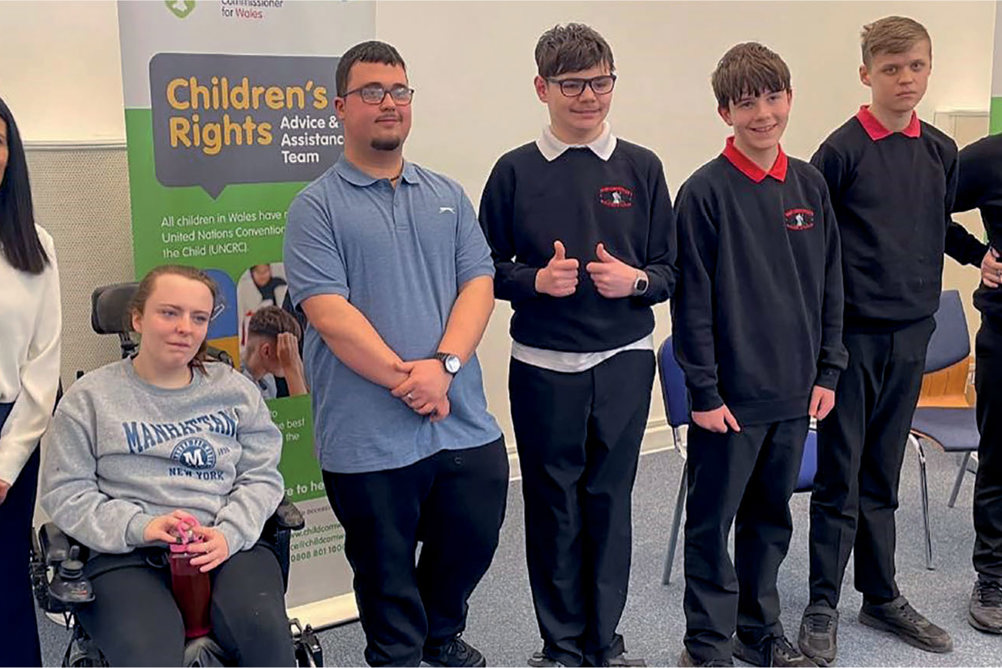
Name Consulting young people with additional learning needs
Provider Children's Commissioner for Wales
The question of how we can ensure children with disabilities and additional learning needs are genuinely listened to was the focus of a recent event held by the Children's Commissioner for Wales in North Wales. The event brought together professionals to explore effective practices for participation and to highlight the importance of listening to children with disabilities and additional learning needs in ways that matter to them.
A children's rights approach is not just about gathering views but about creating an environment where every child feels respected and empowered to share their thoughts. For children with disabilities and additional learning needs, this means listening in ways that meet their individual needs, through verbal communication, art, or other creative methods.
Ahead of the event, we worked with a group of young people from St Christopher's School in Wrexham. The group consisted of eight young people aged 13-18, each with a disability or additional learning need, and their individual needs were carefully considered throughout the delivery of the project. Together, we explored why “voice” matters to them, with support from Wrexham University's Civic Mission team to deliver public narrative training, which focuses on how to tell personal stories that inspire action and connect to larger social issues. Over a period of six weeks, participation workers supported the group to prepare a presentation for the event using the “heart, head, and hands” framework. This approach allowed young people to engage with the topic on a deeper, more personal level.
One of the most striking outcomes of this project was the variety of ways the young people chose to express themselves. While some spoke directly, others used different forms of expression: one young person presented their thoughts through a fantasy fiction story, while others used visual art to share their ideas. These highlight the different ways children process and express their thoughts. It reinforced the point that the method of communication is just as important as the message itself.
During the event, practitioners noted the value of offering a variety of communication options.
The project had a significant impact. It provided the young people with the freedom to express themselves in ways that suited them, boosting their confidence and giving them a sense of ownership over the process (see box).
One memorable moment was when a young person, who usually preferred writing, chose to speak. Creating an environment where young people felt comfortable and supported allowed them to step out of their comfort zone, demonstrating the power of providing a safe space for self-expression.
This project has reinforced this approach to engagement, and I'm committed to continuing to offer creative methods for young people to share their voices. By adopting a rights-based approach, we can ensure that all children, regardless of ability or need, have the opportunity to shape the world around them.
We hope that the insights from engagement work will encourage those working with children and young people to reflect not only on what they consult children and young people about, but also on how they approach this engagement – ensuring that their methods are meaningful, inclusive, and reflective of young people's voices. We intend to follow up with event attendees in a few months’ time to find out how they've put this learning into practice.
Young people's views
One young person reflected: “It was fun and challenging. I did enjoy it, even though I was worried at first. It helped me build my confidence.”
Another said: “They took their time to listen to what we said. A lot of people say children need to be listened to more, but they don't talk about how. I think our message helps with this.”

